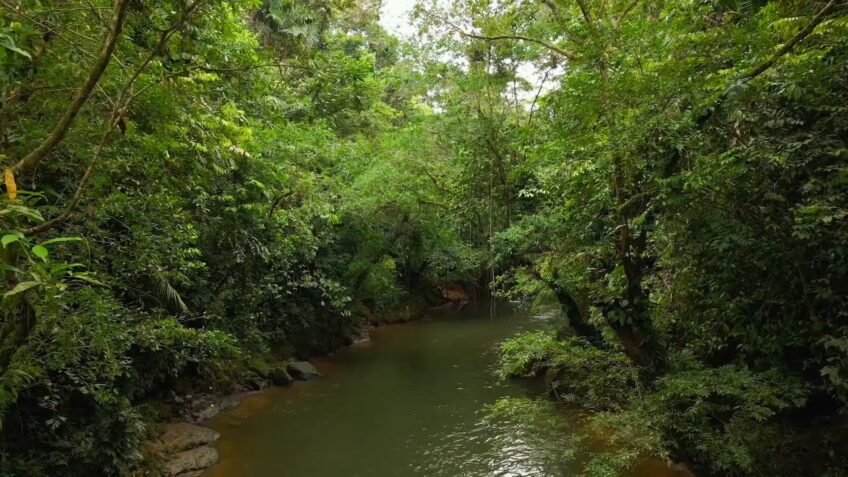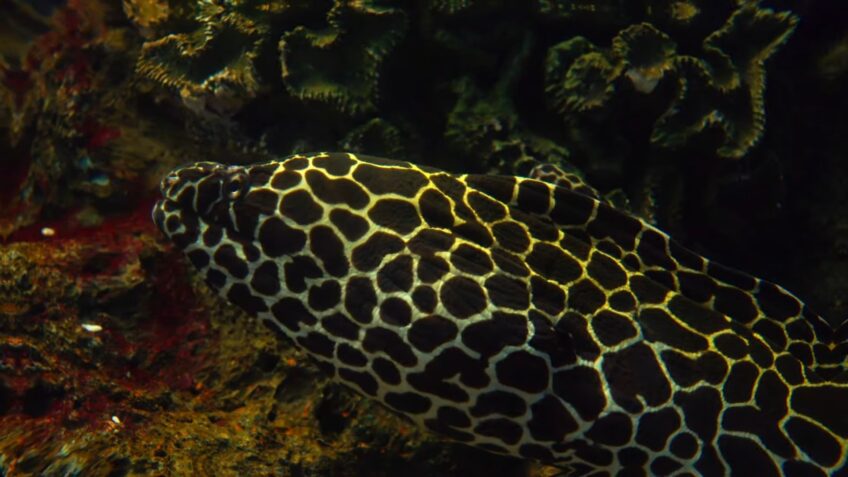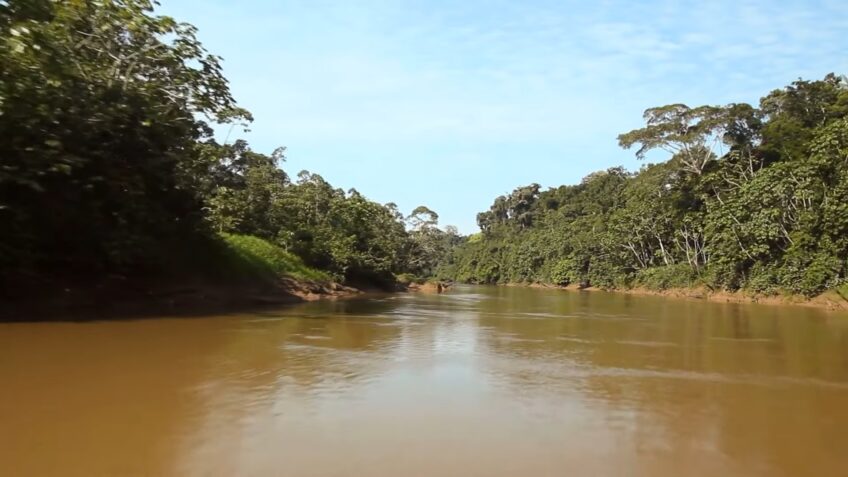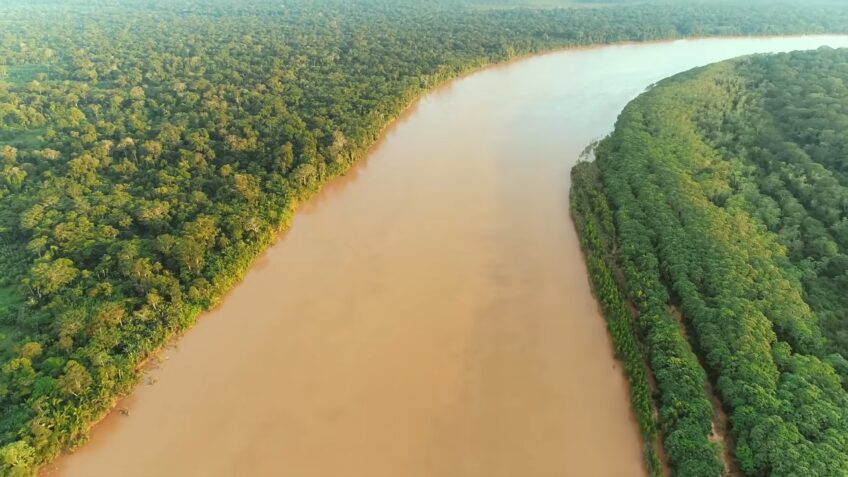The Amazon River, a marvel of nature, winds its way through South America, creating a lifeline for the rich biodiversity and the cultures that depend on it. Its vastness and depth hold mysteries and wonders that have fascinated explorers and scientists for centuries.
In this exploration, I will guide you through the depths of the Amazon River, revealing its secrets and explaining its significance in the global ecosystem.
Key highlights:
- Amazon River’s Depth Range: Learn about the Amazon River’s average depth, ranging from 66 to 160 feet, and its deepest point at 328 feet, which is significant for its ecology and navigation.
- Geographical and Ecological Significance: Discover the Amazon River’s vast geographical span across South America, its role as a hub of biodiversity, and its crucial position in the global ecosystem.
- Comparison with Other Rivers: Understand how the Amazon River’s depth compares to other major rivers like the Congo River and its unique features and challenges.
- Human and Environmental Interactions: Gain insights into how the depth of the Amazon River affects local communities, navigation, and conservation efforts, and the importance of sustainable practices.
- Tourism and Future Preservation: Explore the Amazon River as a tourist destination, the importance of responsible tourism, and the ongoing efforts to preserve this natural wonder for future generations.
The Depths of the Amazon
The Amazon River, known for its impressive size and flow rate, has an average depth ranging from 66 to 160 feet. However, its deepest point plunges to an astounding 328 feet.
This depth makes it nearly impossible for humans to cross on foot and presents unique challenges for exploration and navigation.
The Impact of Depth on River Life
The depth of the Amazon plays a crucial role in its ecological diversity. It provides a habitat for a myriad of species like anacondas, Amazon river dolphins, and piranhas.
This depth also contributes significantly to the river’s discharge rate, making it a vital water source for millions in South America.
Comparisons with Other Rivers
While the Amazon is the deepest river in South America, it is surpassed globally by the Congo River in Africa, which reaches a depth of 720 feet. This comparison highlights the unique geological and ecological characteristics that define each river.
The River Basin

The Amazon River flows through Brazil, Colombia, and Peru, with its basin extending into Ecuador, Bolivia, and Venezuela. Spanning roughly one-third of the South American continent, it originates from various sources in Brazil, Peru, Ecuador, Colombia, Venezuela, and Bolivia, culminating at its mouth in Brazil.
The River’s Changing Width
The width of the Amazon River is as dynamic as its depth, ranging from 2 to 30 miles depending on the season. This variability affects the river’s flow and ecology, shaping the life that thrives within and along its banks.
The Amazon Rainforest: A Lifeline
Surrounding a large section of the river, the Amazon Rainforest is home to about one-third of Earth’s species. This close interdependence between the river and the rainforest is crucial for maintaining the global ecological balance.
Fun Facts
- A River with No Bridges: Despite its size, there are no meaningful bridges crossing the Amazon River. This is partly due to its vast width and depth, making construction a formidable challenge.
- A River of Many Names: The Amazon River was named after the indigenous warrior women encountered by Francisco de Orellana in 1541, reminiscent of the Amazons from Greek mythology.
- A River of Firsts: The first bridge over one of the Amazon’s major tributaries was built only in 2011, highlighting the river’s challenging terrain.
- A River of Superlatives: The Amazon is the largest river in South America and the second-largest in the world, responsible for approximately one-fifth of the world’s freshwater entering oceans.
The Amazon’s Source: A Mystery
The origin of the Amazon River is a topic of ongoing debate among scientists. With varying estimates of its length, it is approximately over 4,000 miles long.
This mystery adds to the river’s allure and importance in scientific research.
The Role in the Global Ecosystem
A Crucial Water Source
The Amazon River’s significant discharge contributes to its role as a crucial water source. Its depth and flow rate support a diverse ecosystem and provide essential resources for human populations in South America.
The High-Water Season
The best time to visit the Amazon River is during the high-water season from January to June or the shoulder seasons of April to May and September to October. This period showcases the river’s might and beauty, offering a unique perspective on its ecological importance.
Challenges and Discoveries
The exploration of the Amazon’s depths presents both challenges and opportunities for discovery. The river’s depth and powerful currents make it a difficult yet fascinating subject for scientific study.
Researchers and explorers utilize advanced technology to map the riverbed and study the unique ecosystems that thrive in its depths. These explorations have led to the discovery of new species and a deeper understanding of the river’s role in the global environment.
Technological Advancements in River Exploration
Advancements in sonar and satellite technology have enabled a more accurate measurement of the Amazon’s depth and flow. These tools help scientists understand the river’s impact on climate, biodiversity, and even local cultures that have adapted to its changing rhythms.
A Hub of Biodiversity

The depth of the Amazon River contributes to its status as a hub of biodiversity. The river and its tributaries are home to thousands of fish species, many of which are unique to the Amazon Basin.
This incredible diversity is a crucial component of the river’s ecological significance.
A Freshwater Haven
As a freshwater river, the Amazon plays a vital role in sustaining the freshwater fish populations that are essential for the ecosystem’s health and local fisheries. The depth and flow of the river create varied habitats that support a range of species.
Human Interaction with the Amazon River
The Amazon River is not just a natural wonder but also a vital resource for the communities that live along its banks. The river’s depth and flow influence the livelihoods of millions of people in South America.
Navigation
The Amazon River’s depth makes it navigable by large ships, a critical factor for transportation and trade in the region. This navigability has shaped the economic and social development of Amazonian communities.
Tourism
The Amazon River attracts tourists from around the world, drawn by its natural beauty and unique wildlife. However, guided tours are recommended, as the river is packed with dangerous wildlife, including huge snake species such as anaconda.
It is also important to mention that responsible tourism practices are essential for preserving the river’s depth and ecological integrity.
Experiencing the Depths
Tourists can experience the Amazon’s depths through boat tours and guided expeditions. These activities offer a glimpse into the river’s underwater world and the life it sustains.
FAQs

Can the depth of the Amazon River vary significantly during the year?
Yes, the depth can vary considerably, especially during the rainy season when the river swells due to increased rainfall.
Are there any unique geological features in the Amazon River due to its depth?
The river features unique underwater landscapes, including deep trenches and submerged riverbanks, which are shaped by its varying depths.
How does the depth of the Amazon River affect local weather patterns?
The depth and flow contribute to regional humidity levels and rainfall patterns, significantly influencing local weather.
Has the depth of the Amazon River been constant throughout history?
No, the depth has changed over time due to natural geological processes and, more recently, human activities impacting the environment.
Are there any cultural or historical sites submerged in the Amazon River?
While there are no widely known submerged historical sites, local legends, and research suggest the possibility of undiscovered archaeological sites.
How does the depth of the Amazon River impact its biodiversity compared to shallower rivers?
The greater depth creates diverse habitats, supporting a wider range of aquatic species compared to shallower rivers contributing to its rich biodiversity.
Final Words
The Amazon River, with its impressive depth and ecological significance, is more than just a body of water. It’s a symbol of nature’s complexity and a reminder of the intricate interdependencies that sustain life on our planet.
As we explore its depths, we not only uncover the secrets of this mighty river but also gain insights into the delicate balance of our global ecosystem.

